In recent years, artificial grass has emerged as a popular and practical solution for pet owners seeking a safe, low-maintenance, and aesthetically pleasing environment for their dogs. This innovative alternative to natural grass addresses a myriad of concerns ranging from pet health and safety to environmental sustainability.
Whether you’re dealing with active pups who love to play or looking for an allergy-friendly option, artificial grass for dogs has evolved to meet diverse needs. This article delves into frequently asked questions about artificial grass for dogs, offering insights into its benefits, functionality, and maintenance, to help pet owners make informed decisions for their furry friends’ outdoor spaces.
Contents
- 1 Safety and Health
- 2 Product Comparison and Selection
- 3 Installation and Types
- 4 Maintenance and Cleaning
- 5 Durability and Usage
- 6 Cost and Longevity
- 7 Specific Features and Technology
- 8 Health and Comfort
- 9 Environmental Considerations
- 10 Additional Questions
- 11 A Leading Manufacturer of Artificial Pet Turf
Safety and Health
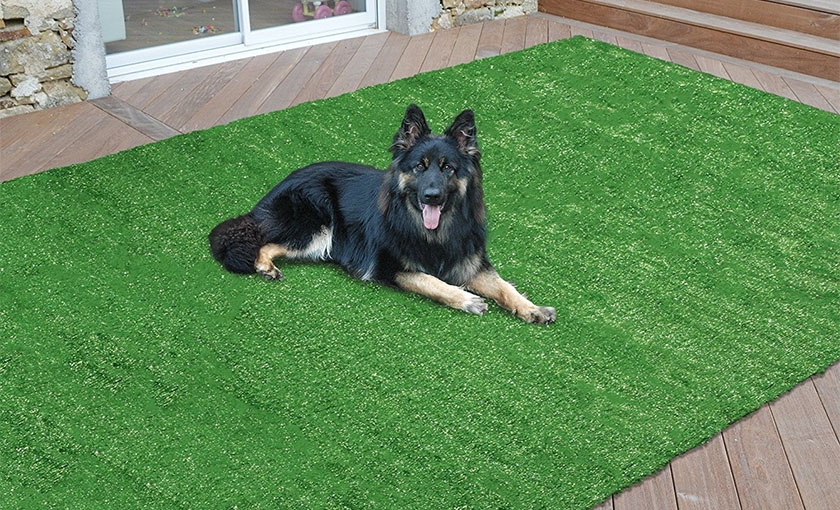
FAQ 1: Is Artificial Grass Safe for Dogs?
Artificial grass is generally safe for dogs, made primarily from non-toxic materials like polyethylene or polypropylene, free from harmful chemicals. Unlike natural grass, it doesn’t require pesticides or fertilizers, reducing the risk of your pet’s exposure to toxic substances. However, it’s crucial to choose high-quality artificial grass that’s specifically tested for safety to ensure it doesn’t contain harmful elements like lead.
FAQ 2: Can Artificial Grass Help with Dog Allergies?
Yes, artificial grass can help reduce allergy symptoms in dogs. It eliminates exposure to common allergens found in natural grass, such as pollen, pesticides, and various molds. Since artificial grass doesn’t provide a habitat for many natural allergens, dogs prone to grass allergies often find relief on these surfaces. Plus, it reduces the buildup of dust and pollen brought into the home, contributing to a healthier environment.
FAQ 3: Are There Any Toxic Materials in Artificial Grass?
Quality artificial grass products are typically free from toxic materials. They’re made from pet-friendly plastics like polyethylene and polypropylene and should not contain harmful chemicals or heavy metals. When choosing artificial grass, especially for pets, ensure it’s certified for safety and doesn’t contain dangerous substances like lead, which can pose health risks.
Product Comparison and Selection
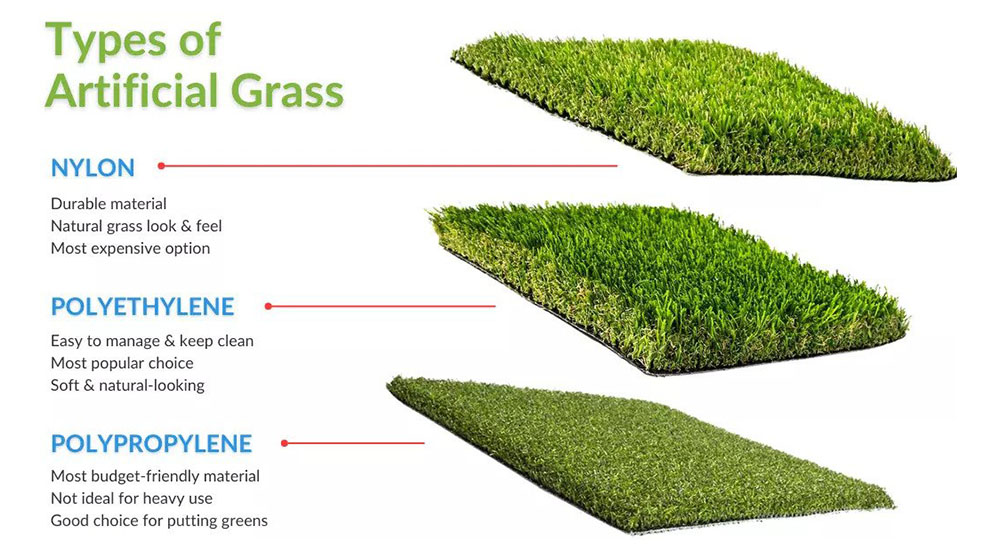
FAQ 4: Real Grass vs. Artificial Grass: Which is Better for Dogs?
Artificial grass offers several benefits over real grass for dogs, including no mud, fewer pests, reduced allergen exposure, and low maintenance. It’s more durable, staying green and lush year-round. However, artificial grass can get warmer than natural grass and may not feel as soft, so it’s important to choose a type designed specifically for dogs, focusing on comfort and temperature control.
FAQ 5: What is the Difference Between Pet Turf and Regular Turf?
Pet turf is specifically designed for animal use, featuring enhanced drainage to effectively handle pet waste, increased durability to withstand pet activity, and often antimicrobial properties to resist odors and bacteria. Regular turf may not offer these specialized features for pets, making it less suitable for areas frequented by pets.
FAQ 6: What is the Best Artificial Grass for Dogs?
The best artificial grass for dogs is durable, has effective drainage, is soft to the touch, and contains antimicrobial properties. Look for turf specifically designed for pets that can withstand frequent use and harsh outdoor conditions without losing aesthetic appeal. Balancing these aspects ensures a safe, enjoyable environment for pets.
Installation and Types
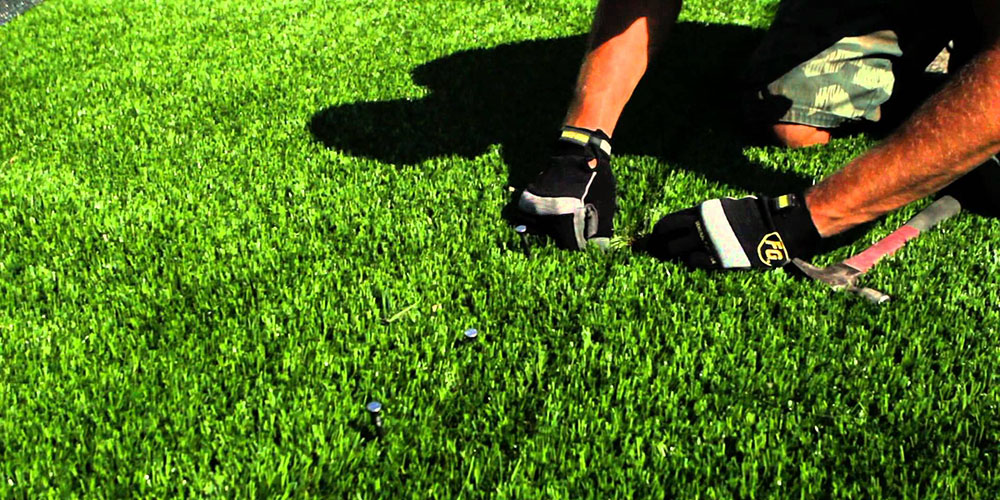
FAQ 7: How Do You Install Pet Turf?
Installing pet turf involves preparing the ground (removing existing grass and leveling), adding a base layer for drainage, laying the turf, securing it in place, and adding infill for stability. Proper installation is crucial for durability and performance, ensuring the turf remains flat and functional over time.
FAQ 8: Can Pet Turf Be Installed on a Balcony or Indoors?
Yes, pet turf can be installed on balconies or indoors, providing a practical grassy area for pets. For balconies, ensure proper drainage to prevent waterlogging. Indoors, pet turf can create a designated spot for pets to play or relieve themselves, especially useful for apartment living.
FAQ 9: What Goes Under Fake Grass for Dogs?
Underneath pet turf, a base layer of crushed stone or sand is typically used to facilitate drainage, especially important for managing pet waste effectively. This base ensures stability, prevents water accumulation, and extends the turf’s lifespan.
Maintenance and Cleaning
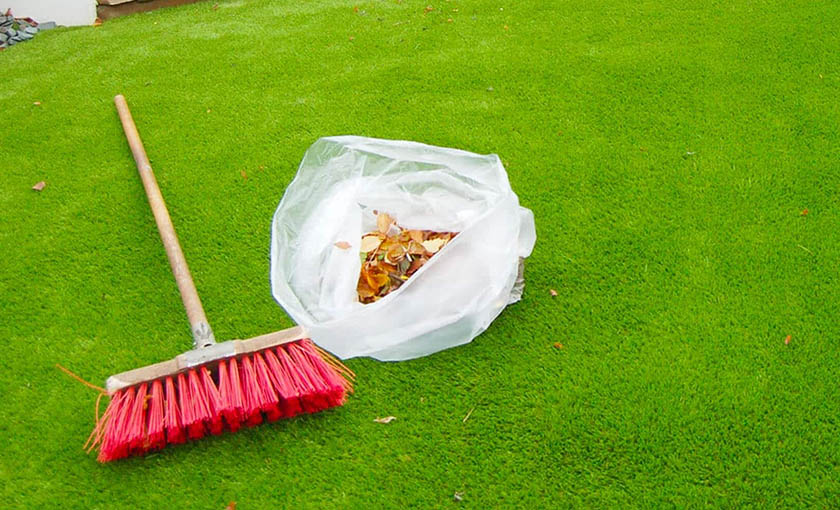
FAQ 10: How Do You Clean Pet Turf?
Cleaning pet turf involves regular removal of solid waste, rinsing the surface with water, and occasionally using a mild detergent or enzyme-based cleaner for deeper cleaning. Proper maintenance prevents odor buildup and keeps the turf looking fresh.
FAQ 11: What Maintenance is Required for Pet Turf?
Regular maintenance for pet turf includes removing debris, rinsing to clean pet waste, and occasional brushing to maintain the turf’s appearance. This routine ensures a hygienic, odor-free, and visually appealing surface.
FAQ 12: Does Pet Turf Get Muddy or Hold Odors?
Quality pet turf is designed to resist mud and odors. Proper drainage prevents waterlogging and smell buildup, making it a cleaner option compared to natural grass. Regular cleaning and maintenance further reduce the chances of odor retention.
Durability and Usage
FAQ 13: How Durable is Artificial Grass for Dogs?
High-quality artificial grass is highly durable and can withstand extensive use by pets. It resists wear and tear from running, playing, and digging, maintaining its appearance and functionality over time.
FAQ 14: Can Dogs Dig Holes in Synthetic Grass?
It is very unlikely for dogs to dig holes in high-quality synthetic grass. The material and installation are designed to be durable and resist such activities. The backing of the turf is usually tough enough to withstand digging, ensuring the longevity and integrity of the surface.
FAQ 15: How Does Pet Turf Handle High Pet Traffic Areas?
Quality pet turf is engineered to endure high traffic. It maintains its structure and appearance even in areas frequently used by pets. The fibers are designed to spring back to their original position, and the turf is resilient against constant movement and activity.
Cost and Longevity
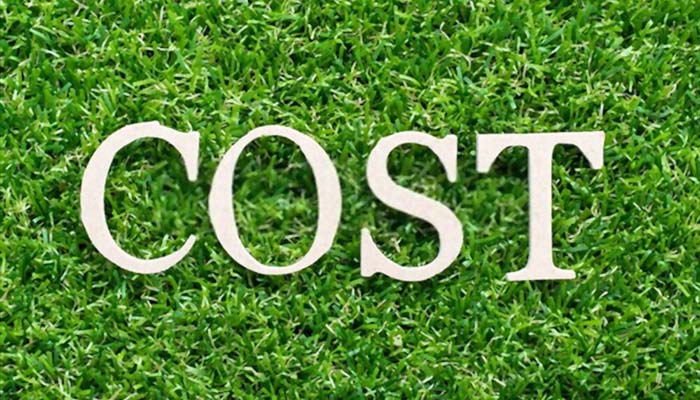
FAQ 16: How Much Does Pet Turf Cost?
The cost of pet turf varies depending on factors like the quality, size of the area, and specific features. Prices can range from moderately affordable to more premium options based on these factors. It’s important to consider both initial investment and long-term savings from reduced maintenance.
FAQ 17: How Long Does Artificial Grass for Dogs Last?
Artificial grass for dogs typically lasts between 10 to 15 years, depending on the quality of the turf and how well it is maintained. High traffic and frequent use can affect its lifespan, but quality turf can withstand these conditions well.
FAQ 18: Are There Long-Term Cost Benefits of Choosing Pet Turf?
Yes, there are significant long-term cost benefits of choosing pet turf. These include reduced water usage, no need for fertilizers or pesticides, and minimal maintenance costs compared to natural grass, resulting in savings over time.
Specific Features and Technology
FAQ 19: How Does Artificial Grass Drain Dog Urine?
Most artificial grass for dogs is designed with a permeable backing that allows liquids such as urine to drain through easily. This prevents pooling and odor buildup, making maintenance easier and more hygienic.
FAQ 20: Does Pet-Friendly Turf Get Hot in Sunlight?
Pet-friendly turf can get warm in direct sunlight, but newer products often include heat-resistant technologies. These innovations help reduce surface temperature, making the turf more comfortable for pets even on sunny days.
FAQ 21: Why is Antimicrobial Protection Important in Pet Turf?
Antimicrobial protection in pet turf is crucial for preventing the growth of bacteria and mold, which can cause odors and health issues. It helps maintain a cleaner and more hygienic surface, making it safer for pets and their owners.
Health and Comfort
FAQ 22: Does Artificial Grass Burn Dogs’ Paws?
High-quality artificial grass is less likely to get hot enough to burn dogs’ paws, especially those with heat-resistant properties. However, during peak heat times, it’s advisable to check the turf temperature and provide shaded areas for pets.
FAQ 23: How Does Pet Turf Impact the Health and Comfort of Dogs?
Pet turf is designed to provide a comfortable and safe surface for dogs to play on. Its smooth and soft texture is gentle on paws, and the lack of pesticides and fertilizers makes it a healthier choice. Additionally, the stable surface helps prevent injuries that can occur on uneven natural turf.
Environmental Considerations
FAQ 24: Is Pet Turf Eco-Friendly?
Yes, pet turf is eco-friendly in several ways. It eliminates the need for watering, reduces the use of chemicals like pesticides and fertilizers, and contributes to water conservation. Additionally, high-quality artificial grass is often made from recyclable materials.
FAQ 25: Can Fleas and Ticks Live in Artificial Grass?
Artificial grass provides a less hospitable environment for fleas, ticks, and other pests compared to natural grass. While these pests can be present, the lack of soil and natural grass detritus makes artificial turf less attractive to them. Regular cleaning and maintenance can further reduce the likelihood of pest infestations.
Additional Questions
FAQ 26: Can Pet Turf Be Customized for Specific Areas or Needs?
Yes, pet turf can be customized to fit specific areas and meet various needs. It comes in different textures, pile heights, and densities, allowing for customization based on the intended use, foot traffic, and aesthetic preferences. This versatility makes it suitable for a range of applications, from residential yards to dog parks.
FAQ 27: What About Odor Control with Pet Turf?
Quality pet turf typically includes features for odor control, such as antimicrobial infill or a specialized backing that aids in drainage. Proper maintenance, including regular cleaning and occasional deep cleaning, also plays a crucial role in controlling and minimizing odors.
FAQ 28: Is Artificial Grass Suitable for All Dog Sizes and Breeds?
Artificial grass is generally suitable for all dog sizes and breeds. The key is to select the right type of turf for your specific pet’s needs, considering factors like the durability of the turf for larger breeds and the softness of the surface for smaller breeds.
FAQ 29: How Does Weather Affect Artificial Grass for Dogs
High-quality artificial grass is designed to withstand various weather conditions, from extreme heat to heavy rain. It remains functional and aesthetically pleasing throughout different seasons, though extreme temperatures can affect the turf’s temperature and comfort level.
A Leading Manufacturer of Artificial Pet Turf
Since our inception in 2006, Relyir has been at the forefront of innovation in artificial grass, particularly for canine applications. As a seasoned manufacturer, we have mastered the art of creating artificial grass that not only looks and feels natural but also caters specifically to the needs of dogs and their owners. Our commitment to quality, coupled with factory-direct pricing, positions us as a market leader.
We offer our products at prices that are 50% to 70% lower than typical retail prices, ensuring that our customers receive the best value without compromising on quality. While our focus is on manufacturing and supply, with a minimum order of 100 square meters, we ensure each customer gets exactly what they need for their unique space, even though we don’t provide installation services.
